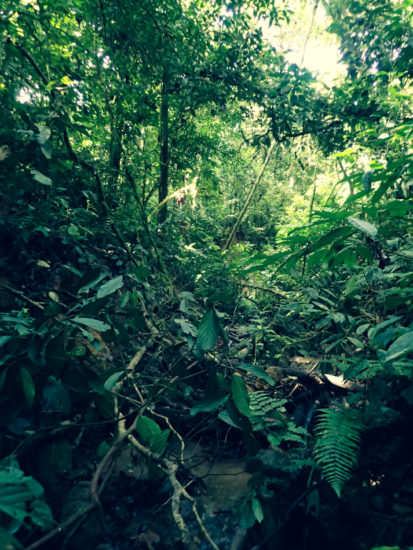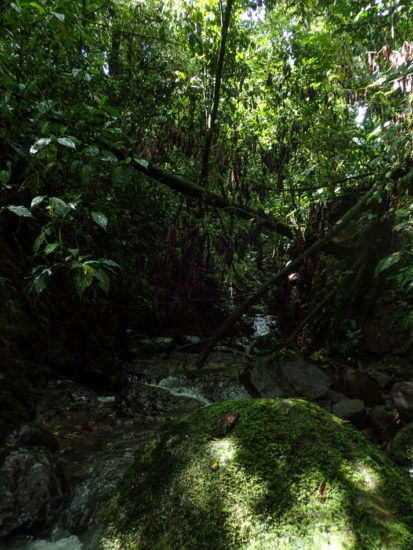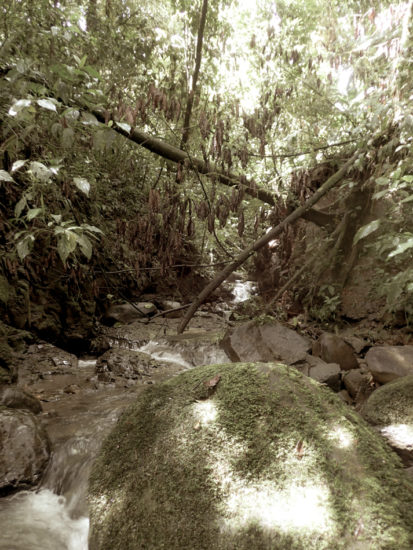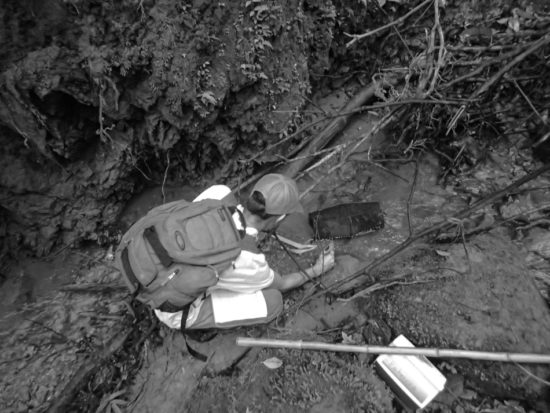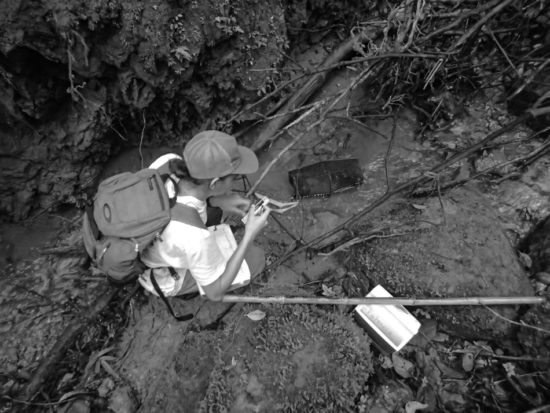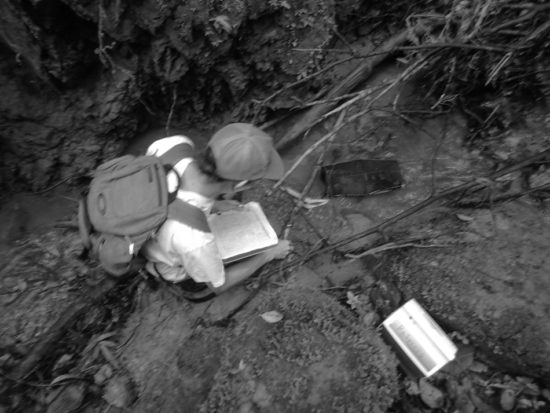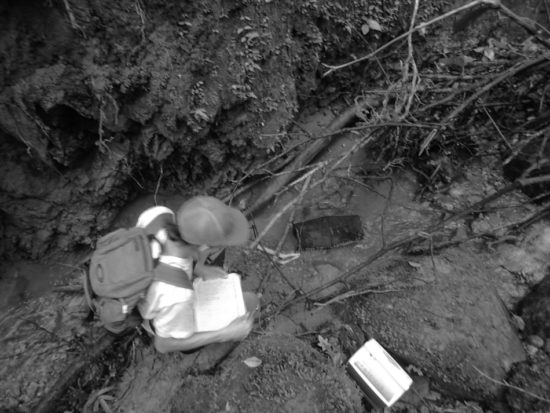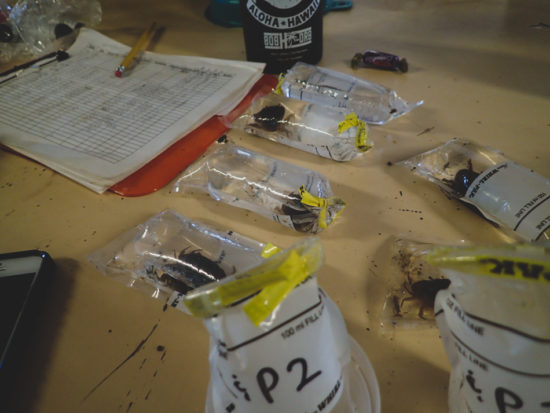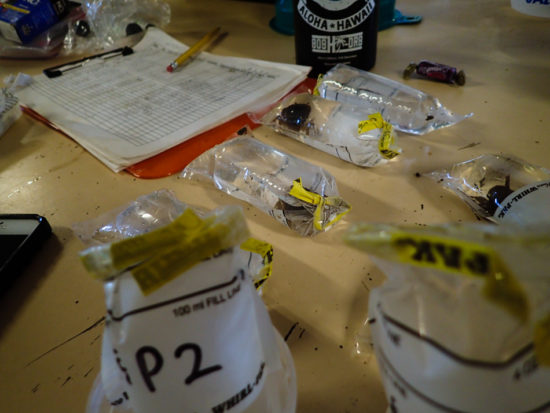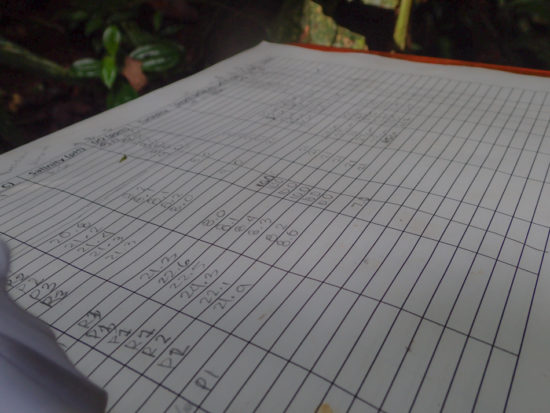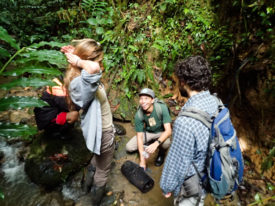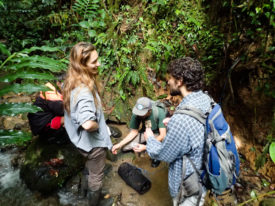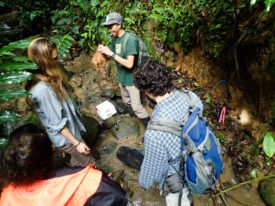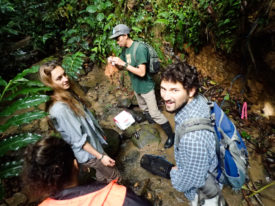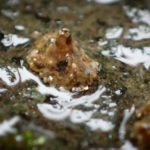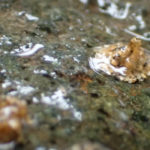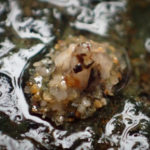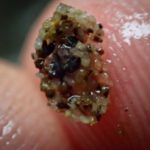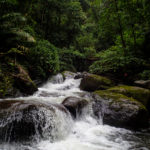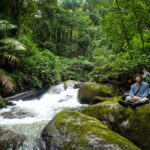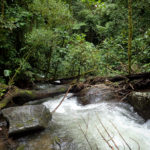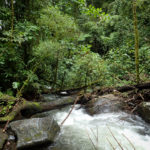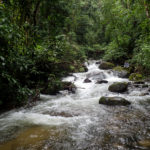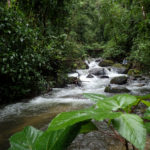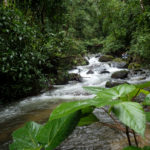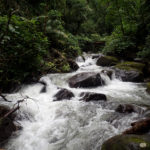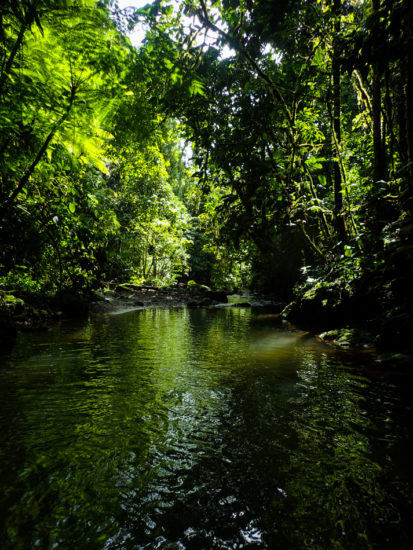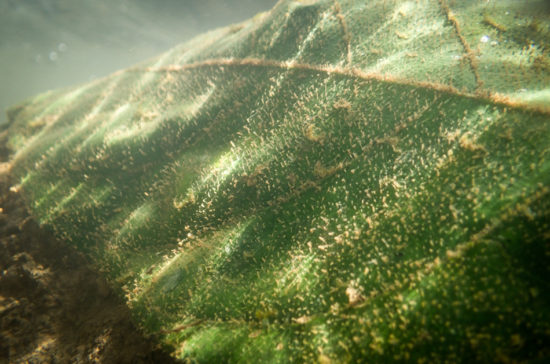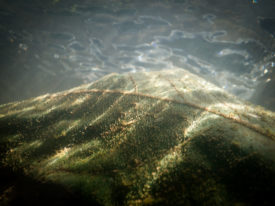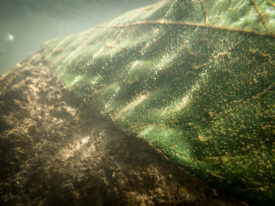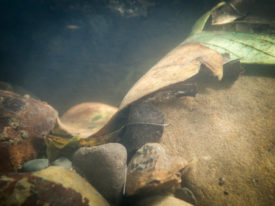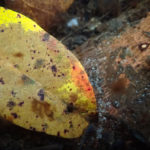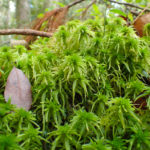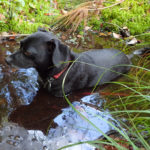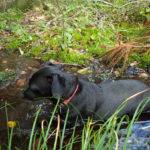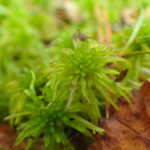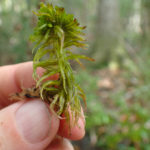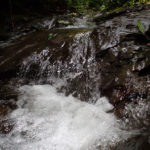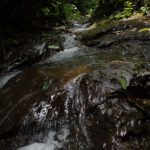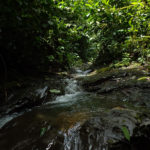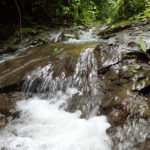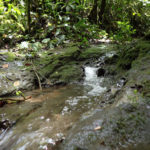These elateridae larvae roam moss-covered boulders and banks of the streams in Las Cruces, mandibles wide-open and hunting prey. Not pictured, because I don’t have an appropriate camera with shutter control, is their glow. If you’re in the stream at night and turn off your headlamp, you’ll soon notice small green “stars” lining the banks—hundreds of them. These guys are bioluminescent!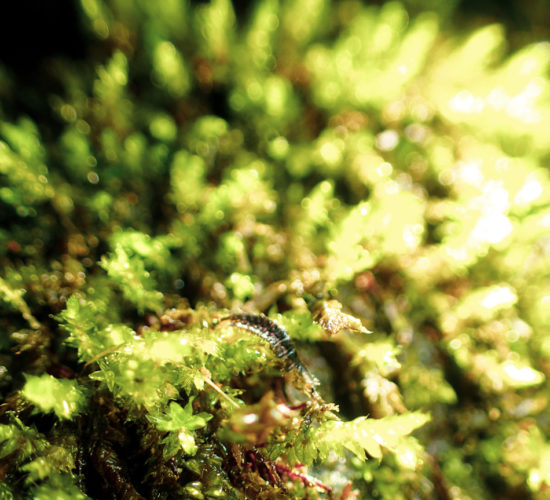
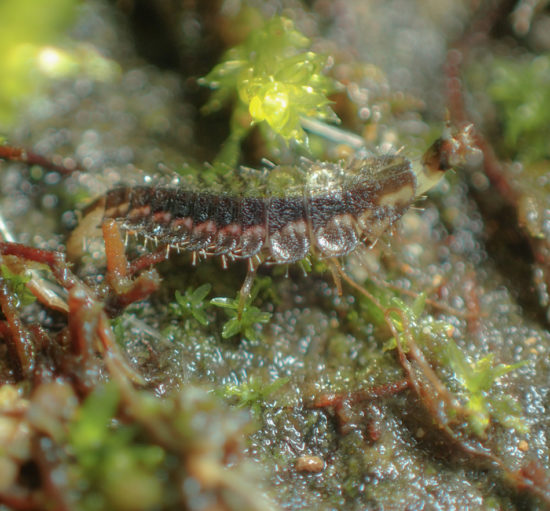
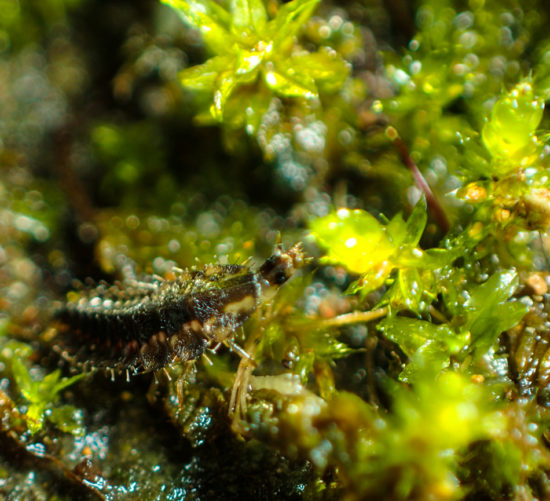
Tag Archives: Streams
Images of headwater streams
A preliminary summary of crab projects
There are three students in this year’s LSAMP-OTS REU working with freshwater, pseudothelphusid crabs: Kainalu (Patricia’s student), Gabby, and Juliet.
Kainalu’s focus: population structure and habitat preferences of the crabs. He’s been using minnow traps to collect crabs from riffles and pools of several streams so far, including Río Java, Quebrada Culvert, and Quebrada Culebra.
Juliet and Gabby, my students, have related questions, so we’ve been keeping the crabs Kainalu has collected and bringing them into the lab.
Juliet is documenting the presence and prevalence of trematode worms (Paragonimus sp.) parasitizing the crabs. There are two known species of trematode to occur in Costa Rican freshwater crabs—P. mexicanus, which can cause paragonimiasis in humans, and P. caliensis (Hernández-Chea et al 2017). While various crab host species have been identified in Costa Rica, including those in genus Ptychophallus and Allacanthos, there doesn’t appear to be good literature identifying the specific species at Las Cruces as hosts—Ptychophallus paraxanthusi and Allacanthos pittieri.
We’ve already found some metacercariae in the hepatopancreas of both crab species here already, and Juliet’s exploring how stream characteristics, carapace length, and sex may impact the parasitization, so she has worked with Kainalu on most field collections.
As Juliet and Kainalu bring in crabs, Gabby has been sorting, helping to measure them, and caring for them in individual containers as she prepares assessing sex-dependent, and claw-dependent agonistic behaviors. While agonistic behaviors are well documented in decapods, these behaviors are often species-specific, and there doesn’t seem to be much literature on Pseudothelphusid behavior. One of the other cool ideas she’s exploring—how does handedness affect behavioral outcomes? These crabs, along with many others, have asymmetrical chelae (claws) and some new research (according to Patricia) suggest different outcomes for bouts when the asymmetry is matched (both crabs have their right chelae larger than the other) versus when the asymmetry differs between crabs (one crab has the right chelae larger, the other has the left).
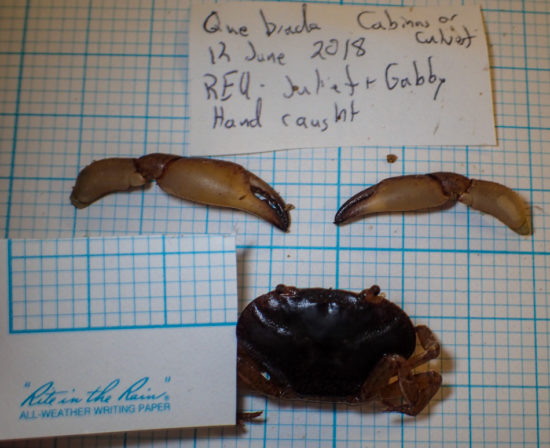
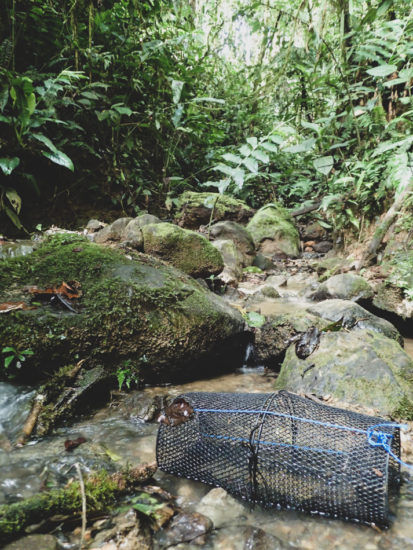
Chimney building aquatic insect
What creates these small, sand, chimneys on the flow-facing surface of boulders? These were found in Rio Bella Vista, a fast-moving, cold, cascading stream in Las Alturas.
Sherman traps for crabs
Some authors have evidently used Sherman traps, usually used for small mammals such as rodents, to catch semi-terrestrial crabs. Given that we don’t really know the terrestrial activity of the stream crabs in Las Cruces, we decided to set a few baited traps up, without luck. The crabs are small, so may not be large enough to trigger the trap, but all the bait was present after the test.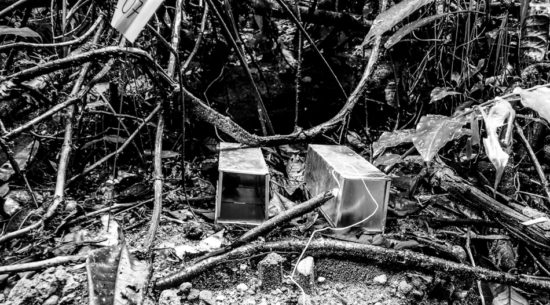
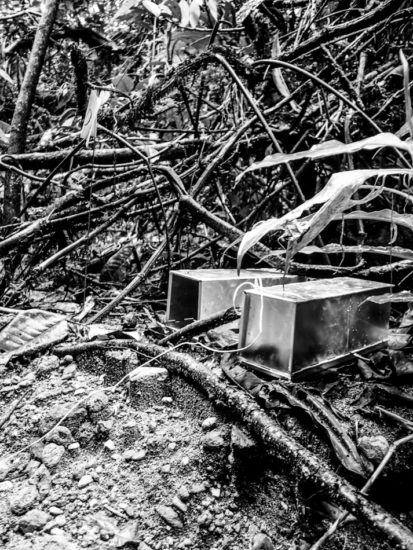
Revisiting Río Bella Vista
A pool in Río Java
Leaf litter in Río Java
Sphagnum moss
A Sphagnum moss grows along the edges of a cool spring at George L. Smith II State Park. The moss is partly characterized by a capitum—a bunch of early branchings at the tip of the moss—and is most common in northern latitudes. It was interesting to see it in Georgia, and Amos was certainly happy to enjoy the cool water.

